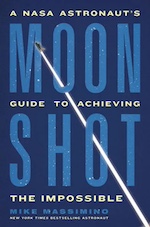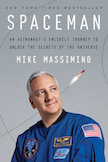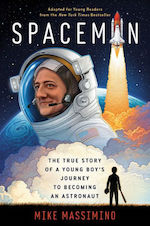Mike Massimino Profile
Mike Massimino is a former NASA Astronaut, a New York Times bestselling author, a Columbia University professor, an advisor at The Intrepid Sea, Air and Space Museum, and a television personality.
A spacewalker on the final two Hubble Space Telescope servicing missions, Mike and his crews traveled faster (Mach 26) and higher (350 miles) than any other astronauts in the 21st century while increasing the discovery capabilities of arguably the greatest scientific instrument ever built by a factor of 100.
During the final Hubble servicing mission, Mike was faced with both success and life-threatening challenges as he performed the most intricate repair ever attempted in space. Mike set a team record for cumulative spacewalking time on a single space shuttle mission, was the last person to work inside of the Hubble Space Telescope, and was the first person to tweet from space. He persisted through three rejections over 7 years on his way to becoming an astronaut, including overcoming a medical disqualification by training his eyes and brain to see better.
Mike has made numerous television appearances and movie cameos, including a recurring role as himself on the CBS comedy The Big Bang Theory. He was featured in National Geographic Television's One Strange Rock and in the Netflix series Worn Stories. Mike is a frequent guest on morning shows and late-night television including The Today Show, Good Morning America, and The Daily Show, and a guest expert on network and cable news including NBC, ABC, CBS, CNN, Fox News Channel, MSNBC, and CNBC.
Mike's first book, Spaceman: An Astronaut's Unlikely Journey to Unlock the Secrets of the Universe, has received rave reviews and is a New York Times best-seller. His second book, Spaceman: The True Story of a Young Boy's Journey to Becoming an Astronaut (for young readers) is a National Science Teachers Association 2021 Best STEM Book Winner.
In Mike's new book, Moonshot: A NASA Astronaut's Guide to Achieving the Impossible, he distills stories and insights from NASA into an actionable guide to accomplish your biggest goals. Mike reveals how to make possible the seemingly impossible—on Earth. Written with characteristic wit and a big heart, Mike identifies ten hard-earned lessons of spaceflight and his other life experiences.
Mike uses humor and his unique storytelling ability to inspire audiences to identify the passion in their work, to use teamwork and innovation to solve problems, to provide leadership in the face of adversity and crisis, and to never give up when pursuing a goal.



